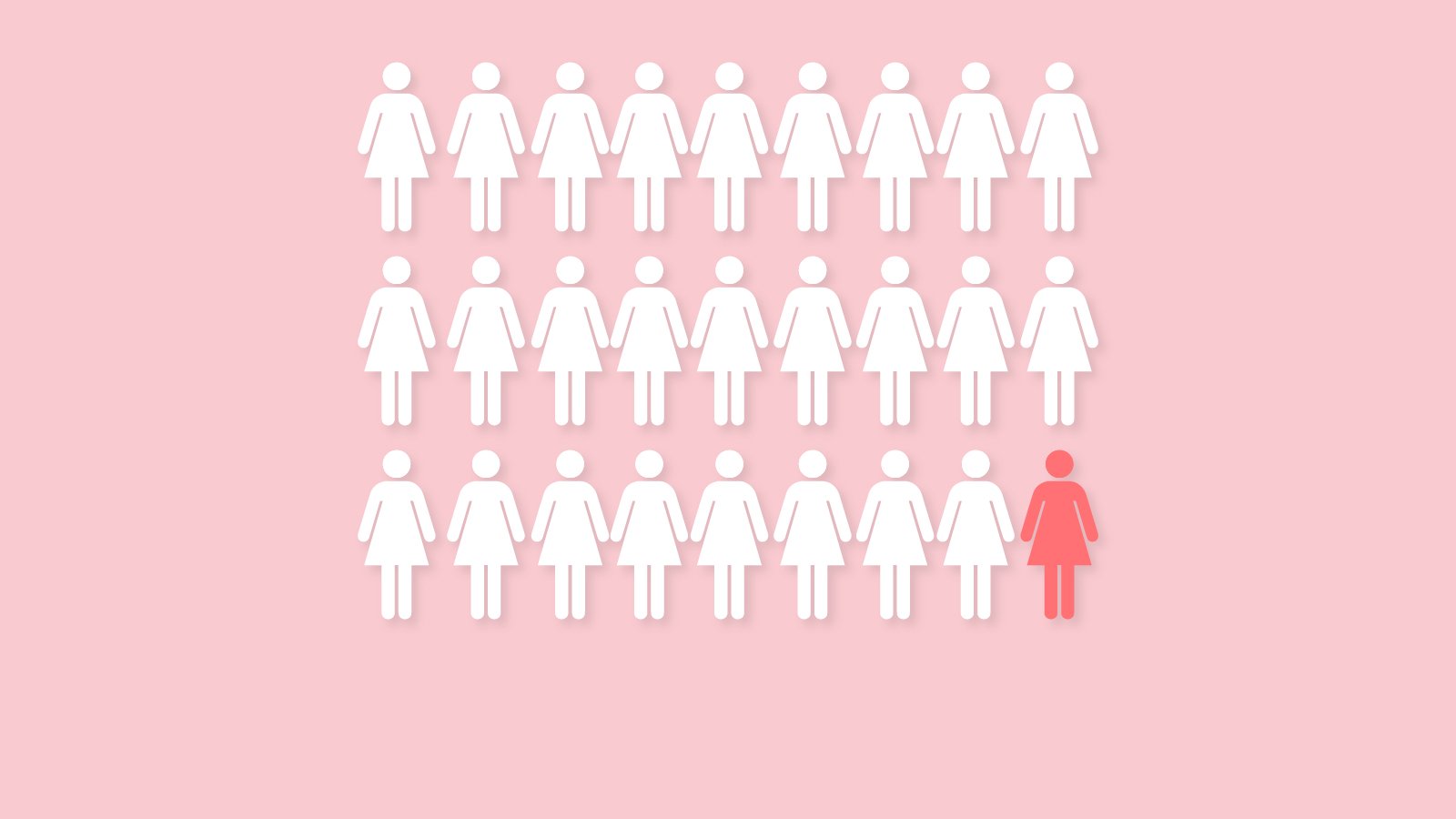[raw]
[/raw]
In 2012, more women in Australia were diagnosed with breast cancer than any other kind, and it was the second biggest killer of women behind lung cancer. That will change by 2016 with trends suggesting breast cancer will become the third most commonly diagnosed cancer in women. Cancer Australia estimates that 3,046 women will die from breast cancer in 2016, accounting for approximately 15.5% of all cancer deaths in Australian women. There are many breast cancer symptoms that can provide an early warning sign for women. However, because pain is rarely one of these, cancer growth and spread can go undetected for longer than it should if regular self-examination doesn’t take place.
In 2012 there were 15,050 women diagnosed with breast cancer (plus 116 men), and that number is expected to rise to 15,934 women (and 150 men) by the end of 2016. However, while one in eight women will be diagnosed with breast cancer by their 85th birthday, the survival rate (living for at least five years after detection) is incredibly high at around 90%. This high number is attributed to a number of factors including the education of breast cancer symptoms, and early detection through mammograms and regular self-examinations. Medical treatment technology has also improved considerably in recent years.
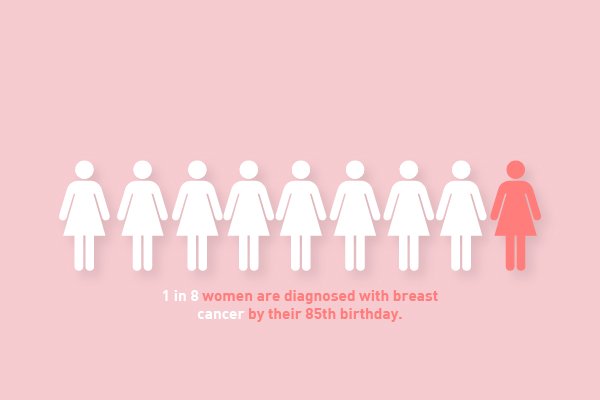
What are breast cancer symptoms?
Early detection of breast cancer symptoms is vital for successful treatment and recovery. It’s important that women perform regular breast self-examinations to understand what they feel like when healthy. That way it is far easier to detect when something may feel unusual. Breast cancer symptoms include:
- Hard and painless lumps with rough edges. These are more likely to be cancerous than lumps that are soft, sore and rounded. However, either way it’s important any lumps are checked as soon as possible after detection.
- Partial or complete swelling of the breast causing a change in size and/or shape.
- Nipple irregularities including a change in colour (redness), movement inwards, forming of ulcers, discharge without applying any force to the area, thickening, scaling or crustiness, and pain.
- Skin changes such as redness, dimpling or some form of irritation.
- Breast or nipple pain of any sort.
- Lumps or swelling under the arm or around the collarbone.
It’s important to understand the appearance of any of these breast cancer symptoms can have other meanings, and typically lumps in the breast aren’t cancer. Many other conditions display the same symptoms such as infections, fibrocystic breast disease and damaged tissue (fat necrosis). However, should any of these breast cancer symptoms be experienced, a visit to a health care professional for breast screening as soon as possible is highly advised.
Pain in the breast can be scary, and this often exacerbates breast cancer fears. However, this is rarely the first sign of breast cancer and is usually a sign of some other condition. Other possible causes of breast pain include:
• Menstruation and the fluctuation of hormones
• Infertility treatment
• Birth control pills
• Stress
• Cysts
• Large breasts that cause related neck, shoulder and back pain
• Ill-fitting bras
• Puberty
• Pregnancy
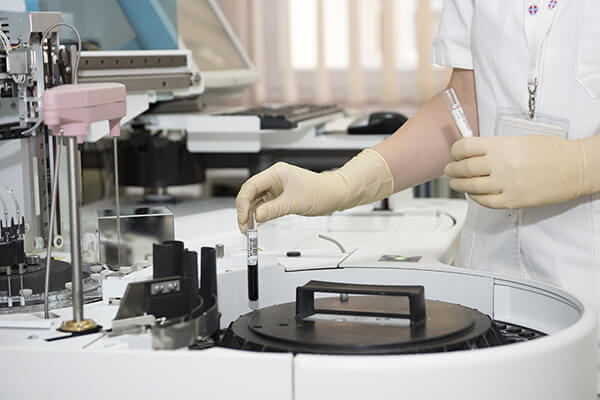
Performing a breast self-examination
The National Breast Cancer Foundation in the United States advises women to perform breast self-examinations at least once per month to increase the likelihood of early detection of symptoms. There are several opportunities and convenient times to do this:
• In the shower – Using a circular movement pattern with the ends of your fingers, work your way in from the outside of the breast to the nipple. Check for lumps, thickening or any other abnormal signs on the entire breast and under the arms.
• In front of the mirror – Inspect your breast with your hands by your sides, and then with your arms overhead. Look for changes to skin colour and contour, nipple colour and swelling. Next, push your palms into your hips to flex your chest to see if there are any skin changes.
• Lying down – Place a pillow underneath your left shoulder and place your left arm behind your head. Use the tips of your right fingers to make circular movements over the entire left breast and feel for lumps, thickening or any other abnormal signs. Repeat for the right breast.

What different kinds of breast cancer are there?
Breasts are a combination of lobules which produce breast milk, ducts that carry breast milk to the nipple, fatty and connective tissues. Cancer occurs when cells develop abnormally, then grow and develop in an uncontrolled fashion. There are several different types of breast cancer that can be contracted:
• Ductal carcinoma in situ (DCIS) and lobular carcinoma in situ (LCIS) – Non-invasive cancer in the ducts and lobules. This is called stage 0 cancer as it has not spread from the original infected tissue. DCIS is the most common form of cancer.
• Invasive DCIS or LCIS – Breast cancer that has spread from the ducts and lobules into the surrounding fatty tissue. In the early stages this is confined to the breast and lymph nodes in the armpit, however it can spread to other parts of the body. This is called secondary, advanced or metastic breast cancer. Most breast cancer cases are discovered when they have become invasive.
• Sarcoma – Rare form of cancer in the breast’s connective tissue.
• Paget’s disease – Rare form of breast cancer found in the nipple area, and is usually a result of invasive cancer from somewhere else in the breast.
• Inflammatory breast cancer – Another rare form of invasive breast cancer that causes the breast to become red and inflamed.
Risks and causes of breast cancer
The reality is the exact cause of breast cancer is unknown, but there are several common mitigating circumstances that increase the risk. According to the Australian Government’s Cancer Australia site these include:
• Gender – The overwhelming majority of people who get breast cancer are women.
• Age – As age increases, so does the risk of breast cancer. The average age for first diagnosis is 60 years of age, while 75% of new breast cancer cases are in women over 50.
• Family history – Somewhere between 5-10% of breast cancer diagnoses are due to a strong family history or a known gene mutation.
• Personal history – A person who has previously had breast cancer is more likely to develop it again in the future.
The Victorian Government’s Better Health website notes that other causes include:
- Lifestyle choices such as:
- Excessive alcohol intake (more than one standard drink per day)
- Obesity or post-menopause weight gain
- Contraceptive pill use
- Use of hormone replacement therapy (HRT)
- Delaying childbirth until after 30 years of age, or not having children at all
- Physiological occurrences such as:
- First period came at an early age
- Natural menopause started after 55 years of age
While there are many contributing factors, having any or all of them does not mean you will get breast cancer. Most people will have at least one of these risk factors and will never develop breast cancer. In fact, most women who contract breast cancer do not have any of the abovementioned risk factors (getting older aside).
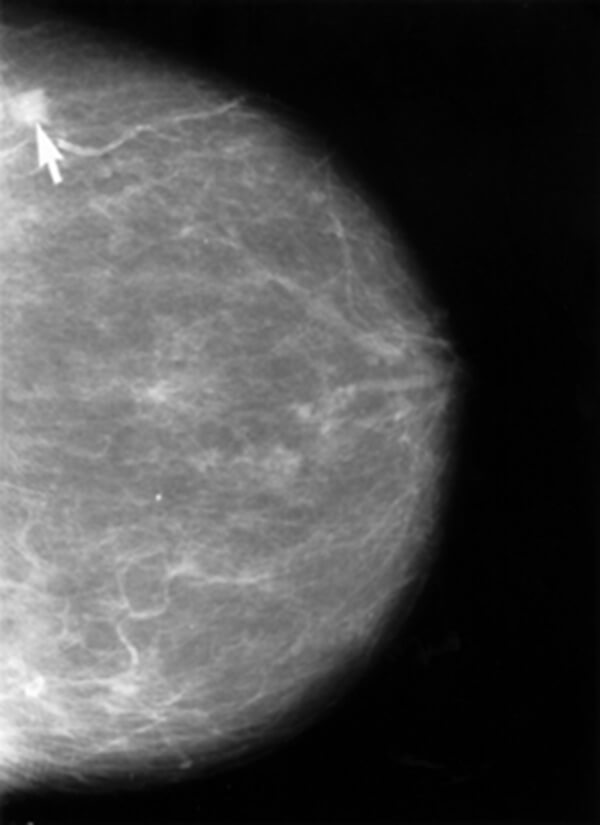
How to prevent breast cancer
Reducing the chances of getting breast cancer to zero is impossible, with no known methods for preventing the disease. However, there are several ways to reduce the risk:
- Lower alcohol consumption
- Stop smoking
- Maintain a body fat percentage and Body Mass Index rating within the Australian healthy guidelines. This can be achieved by regular physical activity and eating a healthy balanced diet.
- Tamoxifen – a hormone for those who have a strong family history of breast cancer.
- Bilateral prophylactic mastectomy – an option for women at high risk due to gene mutation.
If you’re over 50 years of age, it’s a good idea to have a mammogram at least once every two years. For women younger than 40 years of age, but with breast cancer risk factors, it’s advisable to discuss whether mammograms are required with a doctor. Mammograms can detect lumps before they can be felt, and are a primary weapon in the fight against breast cancer.
BreastScreen Australia provides free breast screening services around Australia for all women 40 years of age or older. There are over 500 venues covering city, country and remote locations, including the Campsie BreastScreen NSW Centre right here in Canterbury.
Contact your local BreastScreen service by calling 13 20 50.
Breast cancer treatment process
Early diagnosis of breast cancer is the best way to increase the rate of survival and eradicate the disease from the individual completely. In Australia, diagnosing breast cancer involves a number of tests that can be carried out:
• Clinical breast examination
• Mammogram – a low-impact x-ray
• Ultrasound – scan of the breast using soundwaves
• Fine needle aspiration – a small need is used to remove several cells from the identified area
• Biopsy – using a large needle or scalpel to remove a tissue sample for examination
• Hormone tests – where cancer has been found, it can be checked for hormone receptors to see if hormone treatment will be beneficial
• Ductogram (galactogram) – a test when there is discharge from the nipples
If the cancer is thought to have spread to other areas of the body, blood tests and bone scans may also be done. Once the full extent of the cancer spread has been confirmed, a detailed treatment plan can be developed. This plan must take into account factors such as age and general health. Some of the more common processes for treating breast cancers are:
- Surgery – this is usually the first choice treatment for most health care professionals, with options including:
- Breast conserving surgery – the cancerous cells, some surrounding tissue and lymph nodes are removed, while the majority of the breast tissue remains.
- Mastectomy – total removal of the breast including the lymph nodes underneath the armpit.
- Breast reconstruction surgery – if a mastectomy is required, women often have reconstructive surgery to recreate the breast shape. This can be in the form of silicone or saline implants, or using muscle tissue and skin from other locations on the body.
- Radiotherapy – the use of x-rays to kill cancer cells, often used in conjunction with breast conserving surgery as a double treatment measure.
- Chemotherapy – an intravenous medication, often used in conjunction with surgery and/or radiotherapy.
- Hormone treatment – balances the sex hormones oestrogen and progesterone to reduce the chances of breast cancer recurring.
- Biological therapies – strengthens the immune system to fight cancer (this treatment is in the early stages of use).
- Alternative therapies – complimentary treatments that can improve the quality of life.
Unfortunately breast cancer is not always defeated at the first attempt. A small number of cancerous cells can escape treatment, meaning the breast cancer can return. This is called recurrence.
When recurrence happens in the same place, breast cancer symptoms are almost always very similar to those experienced the first time. These include:
- New lump
- Nipple changes
- Breast swelling or redness
- Thickening near the mastectomy scar
However, should the cancer return regionally to the original cancer site, it’s likely to have returned to the lymph node and the symptoms may be slightly different. These include:
- Lumps near the collarbone or in the lymph nodes
- Pain in the chest
- Loss of feeling or pain in the shoulder and/or arm
- Arm swelling on the same side as the original breast cancer
Where to get breast cancer help
Being diagnosed with breast cancer can be a difficult time for most people. Stress, fear, anxiety and confusion are all normal and natural reactions. It’s during these times of emotional turmoil that people need the most support from a physical, psychological and emotional perspective. This support can come from a wide range of people that can provide guidance in these areas, including health care professionals such as GP’s, social workers, psychologists, counselors and occupational therapists; as well as close family and friends. These include:
- BreastScreen Australia – 13 20 50 and the Australian Government’s Department of Health
- Cancer Council Helpline and website – 13 11 20
- Breast Cancer Network Australia – The peak national organisation for Australians personally affected by breast cancer – 1800 500 258
- National Breast Cancer Foundation – Raises funds for research and development for the prevention and treatment of breast cancer
BreastScreen NSW is a key player in the fight against breast cancer. The latest research suggests there are approximately 50 women in the Canterbury region who have undiagnosed breast cancer because they haven’t been to have a mammogram.
Lantern Club aims to encourage women to book a breast screening appointment. This will either rule out breast cancer and give peace of mind, or detect any issues early so women can seek the treatment they need for the greatest chance of beating this disease.
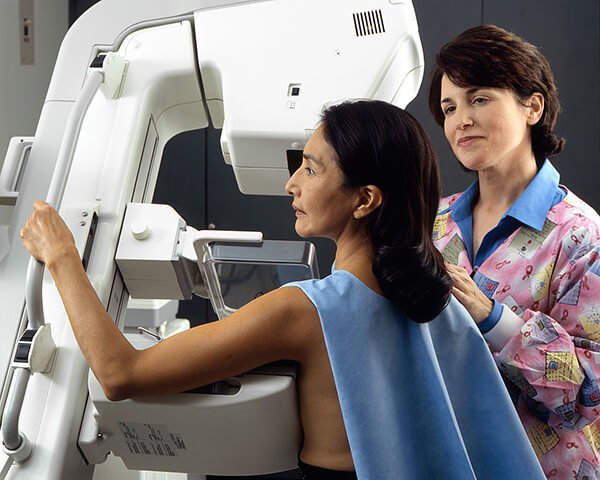
If you would like to find out more about what Lantern Club is doing to help combat breast cancer in our community, please visit our Pink! campaign page.

